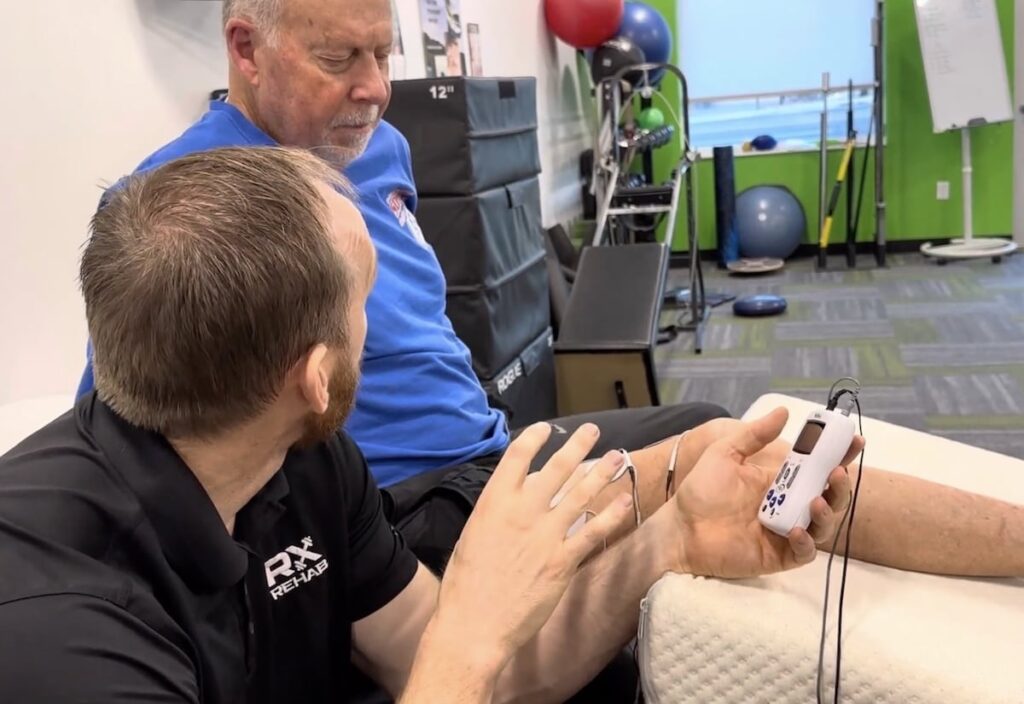Electrical Stimulation
We use electrical stimulation as part of our treatment process.
It’s also known as NMES (neuromuscular and muscular electrical stimulation), EMS (electronic muscle stimulation) and TENS (transcutaneous electrical nerve stimulation).
This is a physical therapy tool to augment the healing process, and we’ve had many patients find success with using this tool.
How Electrical Stimulation Works

There are two theories that explain the process: the Gate Control Theory and the Endorphin Release Theory.
Both work by attaching electric nodes to the skin, which send stimulating impulses through the nerves and change the release of neurotransmitters in the brain. This journal article explains the process more in depth.
Gate Control Theory
This theory explains that the impulses from the unit stimulate nerve endings to block pain signals from reaching the brain and perceiving the pain.
This relieves pain almost immediately, and continues while the treatment lasts.
Endorphin Release Theory
This theory explains that the electrical current stimulates the motor nerves. This allows them to release natural endorphins into the bloodstream.
Endorphins are some of the body’s natural painkillers, and can stay in the bloodstream for up to 20 hours. Therefore you’ll feel relief 20-30 minutes after treatment, and it lasts for hours.
What We Use Electrical Stimulation For
We utilize electrical stimulation for two main purposes: neuro reeducation and pain relief.
After surgery, electrotherapy is especially beneficial to help your nervous system recover and re-educate the neural pathways, so your muscles heal and function properly.
Examples of areas we use electrical stimulation:
- ACL repair
- Back pain
- Impingement of the hip
- Knee pain
- Rotator cuff injuries
- Shoulder pain
- Shoulder impingement
Contact Us
Call us to schedule an appointment or visit our clinic.
